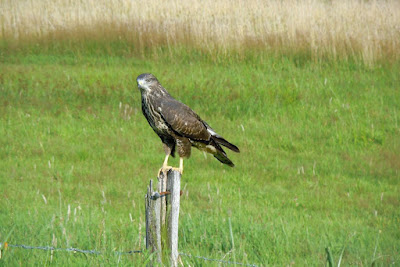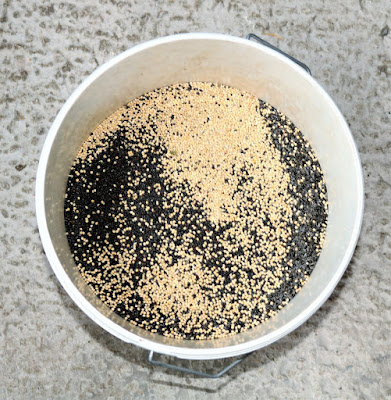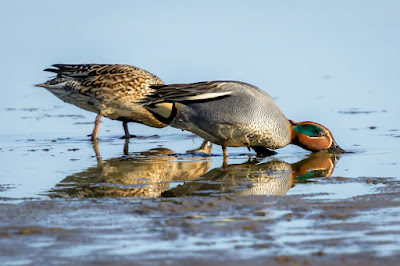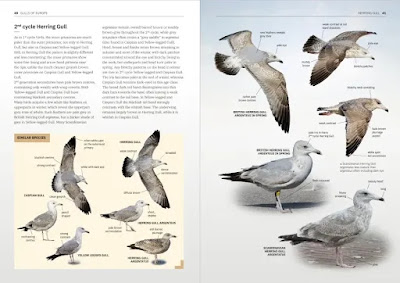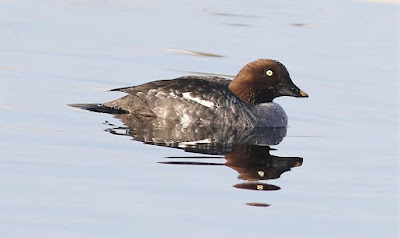In most UK winters the Brambling is a difficult one to find but a bird to prize.
These cousins of the ubiquitous Chaffinch live north and east of here on the
borders of Finland & Russia, venturing this far west in irregular numbers and
unpredictable years.
At the feeding station I‘ve listened for the nasal wheeze, watched the feeders and the ground beneath for weeks while studying the
hedgerow for a flash of white rump amongst the Chaffinches. And then on
Wednesday, joy of joys, at last a Brambling, crouching amongst half a dozen
Chaffinches, an orange neighbour, reward for the seed drops and the interminable
car washing after the tortuous muddy farm track.
The finches scattered for
no reason when I saw that the Brambling, now in a nearby tree, was male, perhaps
even an adult but not for definite until and if we catch the star.
Not that
there’s any ringing just yet while Avian Flu is still nearby and APHA, the
Animal & Plant Health Agency drag their feet on giving the all clear. Seven
weeks, going on eight while waiting to hear when we can collect information for
conservation. In the meantime and if at a loose end I could take up shooting
birds as that’s allowed. Shooters have a route to the top, ringers do not.
A
couple of Reed Buntings, 3 Greenfinch, a couple of Blackbirds and 20 or more
Linnets completed the count as I scattered more seed in the base of the hedgerow
where even the Sparrowhawk’s long legs won’t reach.
Here, and later back home,
garden Greenfinches were in song, more species that so soon can see that spring
is about to sprung. I saw Brown Hares on the move too, three together in the
first of their Mad March ways.
I left the Pilling farm and drove to
Cockerham where at weekend Andy and I had prepared the seed plot for our now
annual whoosh netting of Linnets and the sometime bonus of Skylarks and
Stonechats. But never the wary Stock Doves that scatter at the sight of a
vehicle.
For the uninitiated, the idea of a whoosh net is to propel a fine net
over ground feeding birds via elasticated bungees. The method is somewhat hit
and miss as it requires the said birds to land in the tiny designated/prepared
area and settle there long enough for the net to whoosh over them. Oh how we
laughed when sitting for hours watching Linnets fly round and around without
showing any interest in a mound of fresh, tasty bird seed that would
mysteriously disappear before our next visit.
The local Kestrel hovered
above, and never one to miss a trick, has discovered the seed to be a regular
source of animal protein. I dropped more rats and mouse seed and promised the
60+ Linnets we’d be back when APHA and BTO give us the thumbs up.
After a
number of years of sympathetic farming the most recent owner of Braides Farm has
vandalised the place, torn out every perching fence and singing post, filled and
levelled the vegetated ditches, built a huge midden of earth, and now imported
hundreds of sheep to eat what’s left of the once green landscape.
If there are
any Skylarks this year, they’d best keep clear of grazing sheep. In the distance
and mostly on an adjacent farm were up to 100 Whooper Swans and not much else.
Once again, it’s “follow the money” to see that conservation and wildlife hits
rock bottom in the Tory Grand Plan to level down.
At least at Conder Green there
are birds to see if a little early for the return of the bad boys the Avocets,
black and white birds represented today by three Shelduck recently returned from
their winter in the Wadden Sea, Dutch or German, take your pick.
A
single Little Grebe proved hard to locate, they too are heading back from whence
they came for the coming spring. Wigeon were in good numbers of 60 or more, some
hidden behind the islands while the tiny Teal were so numerous but scattered
throughout that any count would be very inaccurate.
Five Snipe moved
around the mound of the near island and not seeming to hide as they mostly do,
perhaps feeling safer on an island. Small numbers of Redshank, Oystercatcher and
Curlew finished the wader scene.
Time flies when having fun even if it’s the
many and varied birds of spring that I’m really after so I headed home for a cup
of coffee and to search my emails for one from APHA.
No luck. Try again another
day.
Linking this weekend to Eileen's Blogspot and Anni in Texas.








